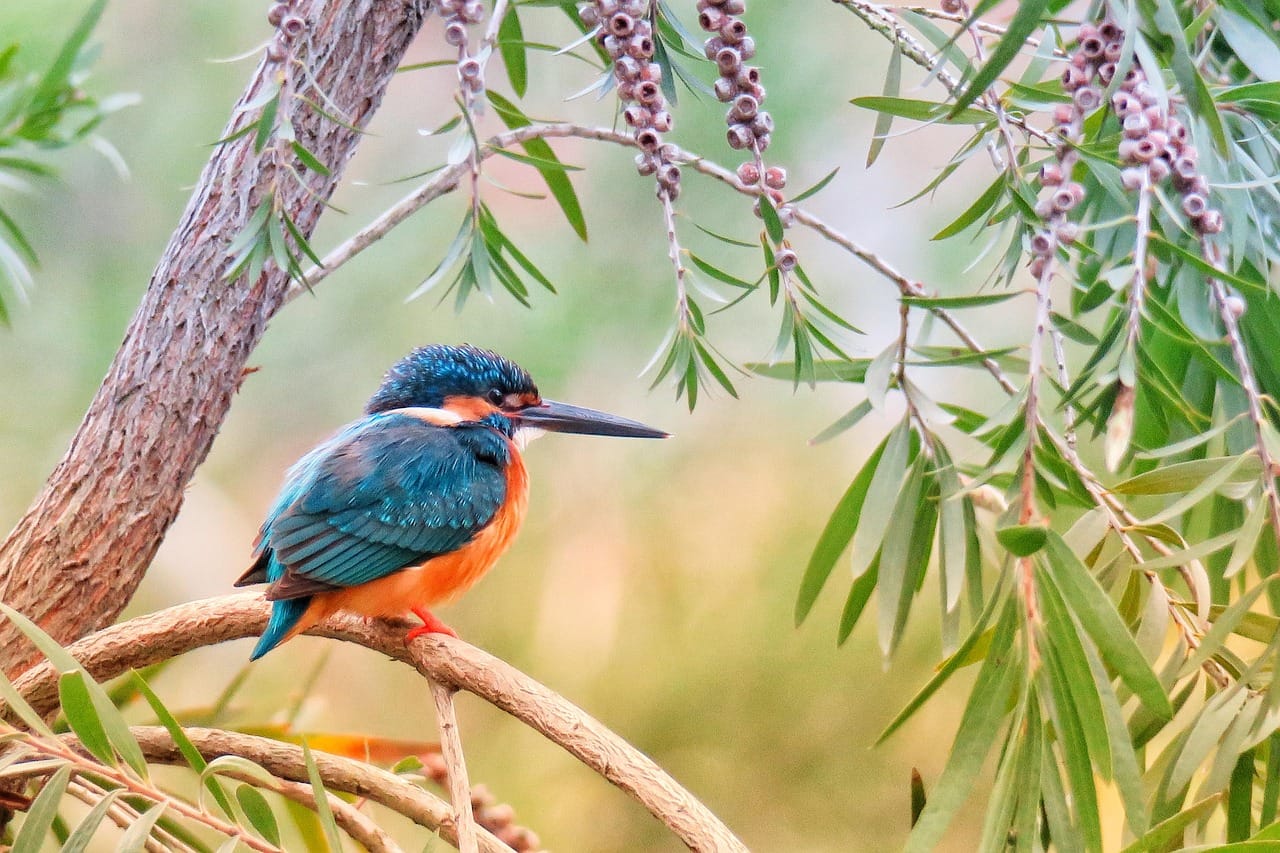Videos of people rescuing birds with their beaks stuck in a tree trunk are popular on the Internet. It is argued that this situation is not uncommon for kingfishers. We decided to check if this is true.
The authors of numerous publications about the carelessness of kingfishers claim that due to the long sharp beak and “uncontrollably high” speed (in some cases it is indicated that it reaches up to 80 km/h) these birds often crash into trees, stick their beaks into them, and then cannot get out on their own, because their legs are too short and do not allow them to push off from the trunk. They write about it entertaining portals and social network users (“VKontakte", Facebook, Instagram, X, Telegram). On YouTube Videos of happy rescues of stranded birds receive millions of views.
The most common species of kingfisher, which appears in viral videos, is kingfisher ordinary. These are small birds weighing up to 50 g, barely larger than a sparrow (however, representatives of other, less common species can achieve much larger). They are easily recognizable by their unusual color - bright blue and orange. Most kingfishers live near bodies of water because their diet consists of fish and aquatic insects. Although the "unstoppably high" speed is a bit of an exaggeration, kingfishers are quite fast: when diving while hunting, they can develop speed up to 40 km/h (which is still much less than, for example, peregrine falcons, which dive at prey at a speed of about 300 km/h). Scientists are still trying figure out, how kingfishers manage to avoid beak and brain damage when hitting water at such speeds, because in humans an impact of such force would inevitably cause a concussion. Kingfishers, on the other hand, can dive for prey several times a day, since for life support they need to eat food in an amount of up to 60% of their weight, and during the period of feeding the chicks they required up to 100 fish per day.
As for the videos in which kingfishers allegedly get their beaks stuck in trees, they raise some doubts. Firstly, there is simply no need for the kingfisher to rush headlong among the trees - as mentioned above, they develop the highest speed during hunting, which takes place in reservoirs. Secondly, in order to break through the bark of a tree with your beak and get stuck in it, the blow must be very strong - much stronger than when diving, because water and wood have different densities, which means that the beak experiences more resistance when colliding with a tree. Therefore, although kingfishers have adapted to being hit by water while hunting, such a head-on collision with a tree would most likely cause them irreparable harm. In addition, despite videos of miraculous rescues of kingfishers allegedly stuck with their beaks in a tree and unable to free themselves, in the wild these birds can hardly count on constant help from people or other animals. This means that if this were a widespread problem, they would either have become extinct by now, or adapted and learned to avoid collisions, or at least figured out how to independently free a stuck beak. “Verified” has also failed to confirm the information that this is a common problem for kingfishers in any reputable study and/or scientific article. All publications about this are found only on social networks, blogs and other resources, where users often do not bother with fact-checking.
Unlike many other birds, kingfishers can "switch"from monocular vision (when images visible with both eyes are not combined into a complete picture, but are perceived as if separately) to binocular (as in a person, when the picture is perceived as a whole, despite the fact that each eye sees only part of the image). In addition, kingfishers' eyes have light-sensitive cones that allow them to distinguish colors. Therefore, it is unlikely that these birds could crash en masse into trees - what chance would other birds without such keen vision have of avoiding this?

The viral videos themselves also raise some doubts. In each of them, kingfishers stuck their beaks into a tree at a very convenient height for rescue (and filming), whereas in the wild birds rarely fly at human height. However, it can be assumed that it was these kingfishers that, for some reason, crashed into the tree so low, were removed, while others, stuck higher, simply died. But the behavior of the bird itself is also strange: it does not try to get out on its own. Users explain this by saying that kingfishers supposedly have too short legs and they cannot reach the tree to rest against it and release their beak. However, the instinct of self-preservation should force the bird to at least try to do this.
Organizations Animal protection has been under attack for several years now alarm due to the fact that videos of saving wild and domestic animals are gaining more and more popularity. Of course, there is nothing wrong with helping our little brothers, but the fact is that most of these videos are staged. Animals are deliberately placed in a situation that is dangerous to their life and health, in order to then save them on camera and collect millions of views and likes. The plots vary: it can be an animal that is attacked by a predator, or an animal that is trapped or stuck somewhere. Experts highlight several signs that the video - and, accordingly, the rescue - is fake: it was filmed in a place where the animals from the video usually do not live, the rescued animal behaves atypically, does not try to escape, the author of the video does not help the animal in the future (the video ends exactly at the moment of rescue, it is not clear what happens to the animal next), etc. All these signs are found in the video with supposedly rescued kingfishers.
Thus, there is every reason to believe that the viral videos of kingfishers stuck in trees are staged. Firstly, due to the lifestyle of kingfishers, it would be difficult for them to get into such a situation in principle. Secondly, in the video the birds behave strangely - they do not try to escape on their own. No authoritative source mentions that kingfishers in the wild have similar problems. In addition, videos with animal rescues evoke a response from the audience, so unscrupulous bloggers do not hesitate to arrange situations that are dangerous for animals in order to gain likes. Therefore, most likely, it is the “saviors” of kingfishers who put the birds in a difficult situation. But even if we assume that a similar situation actually happened to a pair of kingfishers, there is no reason to say that this is a widespread problem among these birds.
Cover photo: Ellen Chan from Pixabay
- National Geographic. How fake animal rescue videos have become a new frontier for animal abuse
- Is it true that in the fall waxwings eat fermented rowan berries and, drunk, fall en masse onto the streets?
- Is the video about the Serbian blogger who climbed into a den and met a bear true?
If you find a spelling or grammatical error, please let us know by highlighting the error text and clicking Ctrl+Enter.






